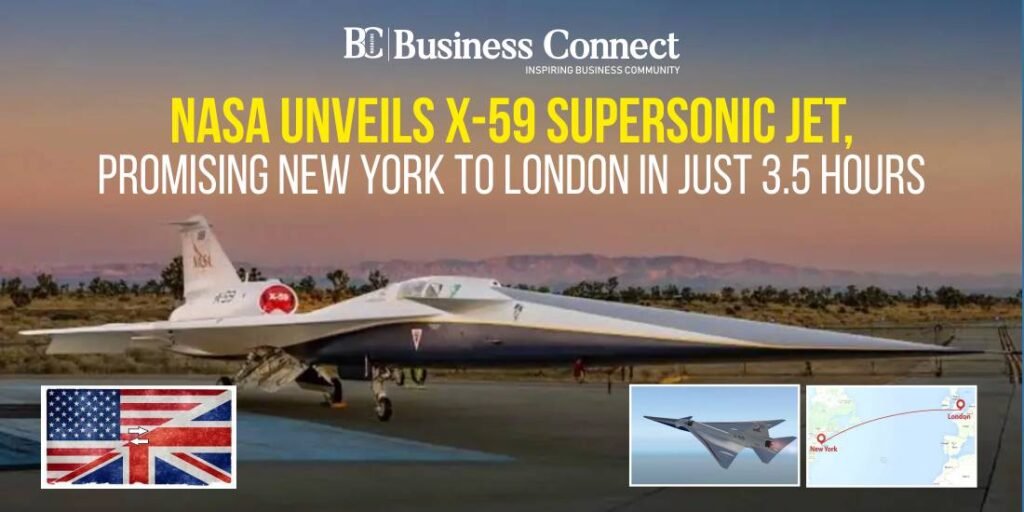NASA Unveils X-59 Supersonic Jet, Promising New York to London in Just 3.5 Hours
Written by Sanjay Kumar
PALMDALE, California – A groundbreaking leap in air travel was witnessed on Friday (January 19) as NASA and Lockheed Martin unveiled the X-59 supersonic jet, touted as the ‘son of Concorde.’ With the capability to fly at speeds exceeding 925 miles per hour, the 100-foot-long and 30-foot-wide aircraft is set to revolutionize commercial aviation.
NASA
Government agency
- Founded: 29 July 1958, United States
- Founder: Dwight D. Eisenhower
- Headquarters: Washington, D.C., United States
- Video games: Moonbase Alpha, To the Moon and Beyond, MORE
The X-59 arrives almost two decades after the retirement of the Concorde in 2003, which had a top speed of 1,350 miles per hour but faced challenges such as expensive maintenance and a fatal crash in 2000. The X-59, however, promises a more sustainable and less disruptive supersonic experience.
Unlike its predecessor, the X-59 is designed to create a significantly reduced sonic boom, addressing concerns that led to the 1973 US ban on civilian aircraft breaking the sound barrier over land. This breakthrough in design, shaping, and technology aims to mitigate the impact of sonic booms on communities below.
Pam Melroy, NASA Deputy Administrator, emphasized the X-59’s broader significance, stating, “The X-59 transcends its role as a mere aircraft; it stands as a symbol of our collective ambition to redefine the future of supersonic travel.” She added, “This breakthrough really redefines the feasibility of commercial supersonic travel over land, bringing us closer to a future where flight times from New York to Los Angeles are halved.”
Acknowledging global concerns, NASA highlighted that supersonic flights have faced restrictions due to disruptive sonic booms. However, Lockheed Martin, awarded a $250 million contract in 2018, has developed the X-59 with innovative features to overcome these challenges.
Powered by General Electric Co.’s F414 engine, the X-59 boasts a v-shaped wing and elongated nose, designed to reach 1.5 times the speed of sound while minimizing sonic disturbances. Originally slated for a 2021 debut, the project, including testing, is expected to cost approximately $632 million over eight years.
The unveiling of the X-59 marks a significant step towards redefining the future of air travel, with the potential to cut travel time between major cities drastically. As aviation technology advances, the X-59 promises not only speed but also a quieter and more sustainable supersonic experience for passengers and communities on the ground.



